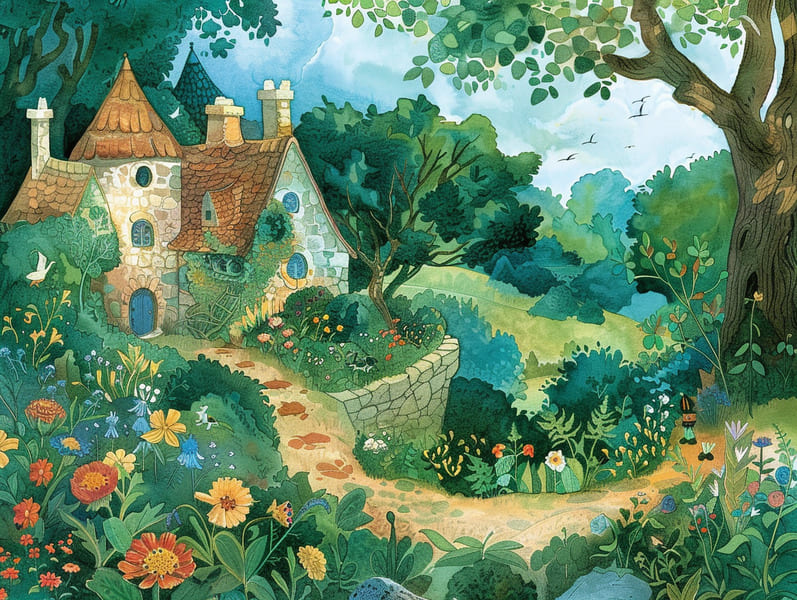The Evolution of Vintage Fairy Tales and Their Unfading Radiance.
The Evolution of Vintage Fairy Tales and Their Unfading Radiance.
Blog Article

Classic fairy tales have historical significance. These tales have been transmitted from one generation to the next centuries before they were ever inscribed. They were born from a variety of backgrounds, including Asian traditions. They were initially passed along among adults, often carrying themes and messages aligned with the societal norms and beliefs of the time.
The famous Grimm duo, Jacob and Wilhelm, were among the first to collect many of these beloved fairy tales. Their published works, "Grimm's Fables," included classics like "Cinderella," "The Bread Crumb Trail," and "The True Story of Snow White," which have since become cornerstones in the world of children's fairy tales. Similarly, the Danish author's enchanting narratives, such as "The Story of the Little Mermaid," and "The Duckling that Could," have enchanted hearts worldwide, cementing their place in the pantheon of iconic fairy tales.
Despite their historical roots, fairy tales remain as important as ever, especially as nighttime stories for kids. These delightful tales are now available in diverse formats, including beautifully illustrated books, captivating animations, and web-based fairy tales.
Their continued relevance can be credited to several charming aspects:
Ethical Lessons: Ancient fairy tales often present important moral lessons. Tales like "The Shepherd Boy and the Wolf" teach the significance of honesty, while "The Tale of the Tortoise and the Hare" show the benefits of determination and unassuming nature. These narratives offer little ones clear distinctions between good and bad, developing their moral compass in a subtle yet profound way.
Empathy and Understanding: Classic fairy tales frequently showcase beings facing challenges and struggles, provoking listeners to understand with their struggles and support their triumphs. For instance, "Beauty and the Beast" teaches us the benefit of looking beyond appearances to appreciate the true essence of a being, enhancing empathy and perception.
Cultural Awareness: Many classic fairy tales are deeply embedded in the cultural contexts from which they developed. Delving into these stories can provide informative snapshots into different backgrounds, advancing a sense of global respect and discernment.
Fantasy and Innovation: The whimsical elements in timeless fairy tales—spells and potions—provoke children’s imaginations. These narratives move readers to supernatural realms, boosting inventive ideas and a sense of magic that continues a lifetime.
Traditional fairy tales are not only fascinating but also teaching. They serve as spellbinding tools in strengthening various cognitive and affective skills in children. When old fairy tales are spoken out loud, they nurture language skills by presenting new terms and meanings and sophisticated sentence structures. This practice also improves hearing abilities and concentration, as young readers follow the story, prepared to see what happens next.
Furthermore, examining the themes and characters of fairy tales can advance intellectual skills and evaluative skills. Little ones are instructed to recognize patterns, expect results, and comprehend cause and effect. These discussions also further children articulate their thoughts and feelings, fostering their emotional intelligence.
In today’s technological era, the presence of online storybooks has made these fairy tales more accessible than ever. these guys Websites and software extend comprehensive collections of ancient fairy tales that can be seen or played anytime, anywhere. Fairy tales read aloud are particularly favored, giving an delightful method for the young to savor these charming tales. Read-aloud books and read-out-loud stories guide characters and settings to life, often complemented by captivating melodies and tunes that amplify the tale experience.
The timeless fascination of old fairy tales lies in their ability to change to the present while preserving their main lessons. Contemporary updates of these tales often present more varied characters and modern settings, making them relevant to today’s audience. However, the core values of fortitude, compassion, and honesty remain unchanged, continuing to appeal to listeners of all ages.
Fairy tales also offer a sense of assurance and knownness. They bestow a tidy narrative with a transparent beginning, middle, and end, often wrapping up with the culmination of conflicts and the triumph of virtue over corruption. This steadiness can be consoling for children, providing a sense of dependability in an variable world.
Timeless fairy tales continue to bewitch and guide new generations, maintaining their attraction and pertinence in modern society. As kids' bedtime tales, they make accessible a perfect blend of enchantment and education, promoting moral values, empathy, and creativity. The prevalence of online fairy tales and the well-received status of fairy tales voiced ensure that these old stories remain attainable to new generations.
By retaining and narrating these fairy tales, we continue to recognize the rich tapestry of folklore and cultural heritage. Whether you are reading a artistically illustrated book, perusing a cyber library, or playing an read-aloud book, the grace of classic fairy tales is always within reach. These narratives emphasize of the eternal effect of tales and its ability to connect us across eras and regions.
Regardless if you are discovering a vividly illustrated book, browsing a virtual library, or hearing an sound book, the charm of traditional fairy tales is always within reach.
These stories convey of the unfading force of narratives and its ability to draw us together across epochs and places, casting a charm that charms and informs alike.